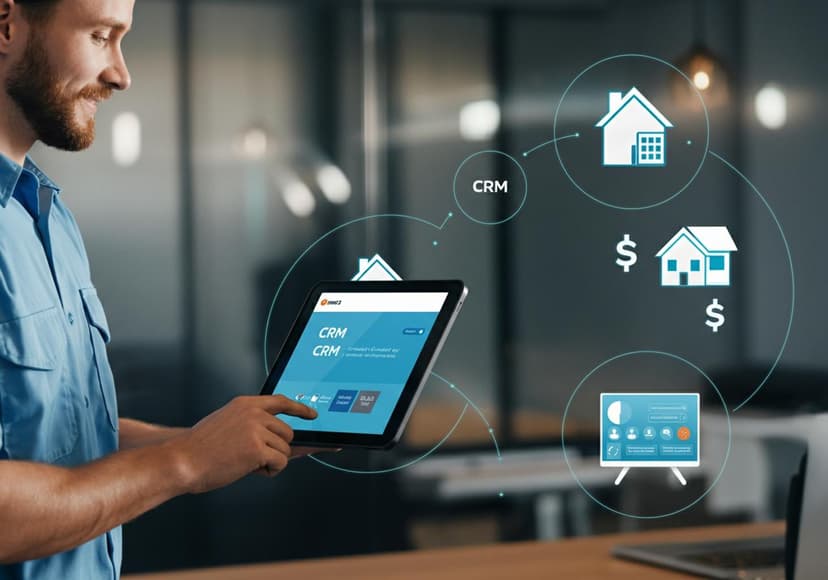How To Implement Accounts Payable Automation
Automating accounts payable reduces errors, improves efficiency, speeds up payments, and enhances financial control effectively.
In today’s fast-paced business environment, Accounts Payable Automation (AP Automation) is no longer an option; it’s a necessity. If your organization is still bogged down by manual invoice processing and paperwork, it’s time for a change! This blog post will guide you through the steps to implement AP Automation effectively.
Why Go for Cloud-based AP?
Firstly, let's delve into what Cloud-based AP really means. Unlike traditional systems, cloud-based solutions offer flexibility, ease of access, and scalability. With a cloud-based AP system, your accounts payable operations can be managed from anywhere, anytime, making it a breeze to keep your financial operations running smoothly. Additionally, think of how much time you could save on invoice processing and vendor management!
Identify Your Objectives
Before jumping into the technical aspects, it’s crucial to outline your objectives. Do you aim to improve payment processing speed? Or perhaps you seek better **fraud detection** capabilities? Identifying your goals will help streamline your workflow automation efforts and ensure you're using the right tools to achieve your specific needs.
Choose the Right AP Automation Software
The next step is to select an AP Automation software that aligns with your objectives. Look for features like invoice processing, robust vendor management, and integrated data extraction. Solutions like Bill.com offer excellent functionalities that help manage invoices and streamline payment processing, ideal for businesses of any size.
Take Advantage of ERP Integration
When implementing accounts payable automation, check if the software you choose integrates well with your existing systems. ERP Integration is vital to ensure that data flows smoothly across platforms, reducing discrepancies and manual input errors. By aligning your AP automation with your ERP, you’ll get a unified view of financial data that can enhance decision-making.
Set Up a Standardized Workflow
Now that you have the tools and systems ready, it's important to establish a standardized workflow. Outline each step from invoice receipt to payment authorization to ensure compliance and reduce risk. Utilize workflow automation features within your software to handle approvals, notifications, and reminders automatically. This step can dramatically speed up your processes and minimize manual errors.
Train Your Team
No matter how effective the technology is, the human element is equally important. Invest time in training your team to use the new platform effectively. Make sure they’re comfortable with how invoice processing works, as well as the compliance and fraud detection measures that are in place. A well-trained team is key to ensuring your AP automation initiative's success.
Conduct Regular Audits
Once your accounts payable automation system is live, keep an eye on it! Regular audits will help you gauge the efficiency of your new processes. Look into payment processing times and assess if fraud detection measures are working as intended. If not, you might need to revisit your compliance policies or workflow automation strategies.
Integration with Procurement Automation
Another advantage of having an automated accounts payable system is the potential for integrating with procurement automation. This allows you to streamline your purchasing processes, making vendor management an even more robust and systematic effort. Automation in procurement can lead to better compliance and cost savings long-term.
Explore Advanced Features
Finally, don’t hesitate to explore more advanced features that many platforms offer. Functions such as advanced data extraction can significantly reduce time spent on mundane tasks. Plus, cloud-based applications often come with built-in analytics dashboards, providing vital insights into your financial processes. Refer to successful case studies and resources like Yooz to inspire your strategy and execution.
The Bottom Line
Implementing Accounts Payable Automation is a multi-step process that, when executed effectively, can lead to significant improvements in efficiency, compliance, and even fraud detection. By leveraging cloud-based solutions, optimizing workflows, and ensuring your team is trained and up to speed, your organization can stay ahead of the competition. Take the plunge and switch to a more efficient AP process—you won’t regret it!
For more insights into AP automation and its benefits, check out this detailed guide from NetSuite.

Posts Relacionados

5 Ways Crm Can Help Hvac Contractors
Enhance customer relationships, streamline operations, and boost profits with effective CRM for HVAC businesses.

Choosing The Right Hr Software For Your Small Business
Small businesses should consider HR software that improves efficiency, reduces costs, and simplifies HR processes.

Favorite Software Development Companies For Startups
Startups need reliable software development companies to build their products and scale their businesses effectively.